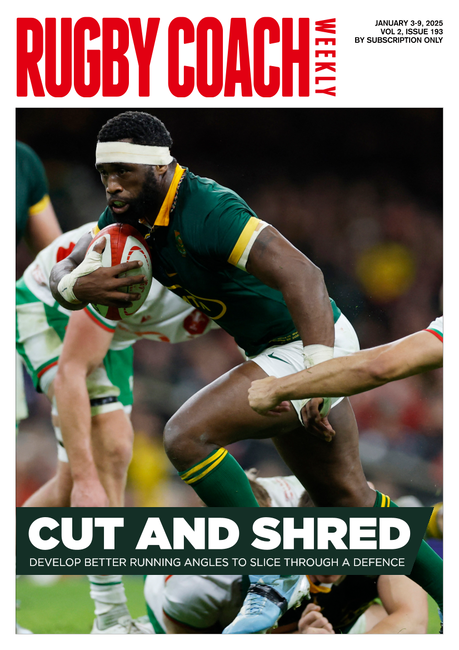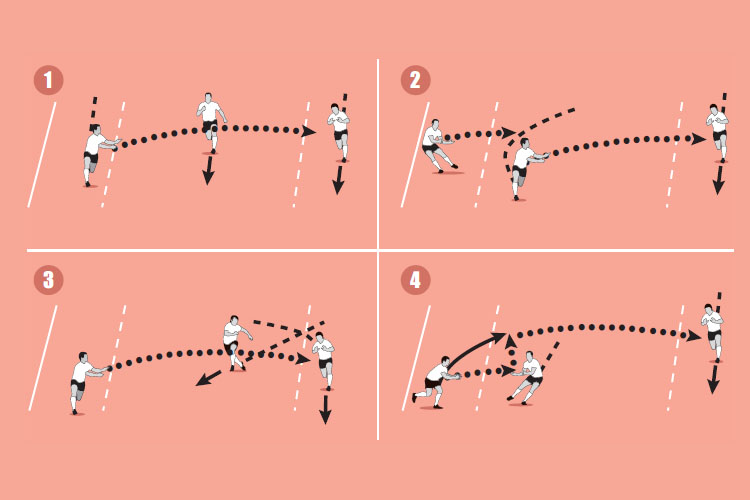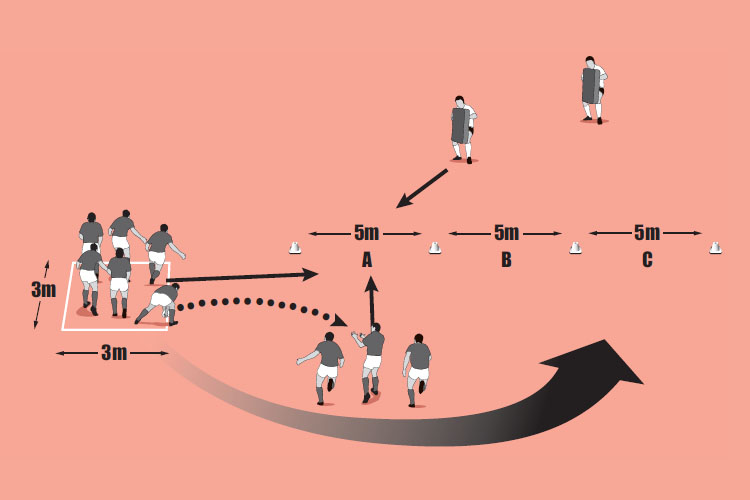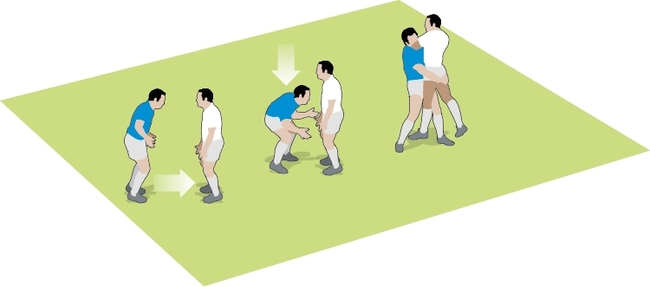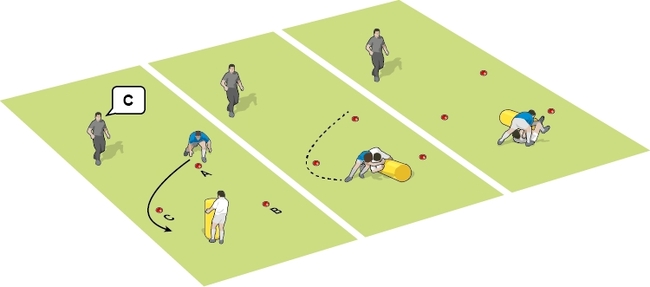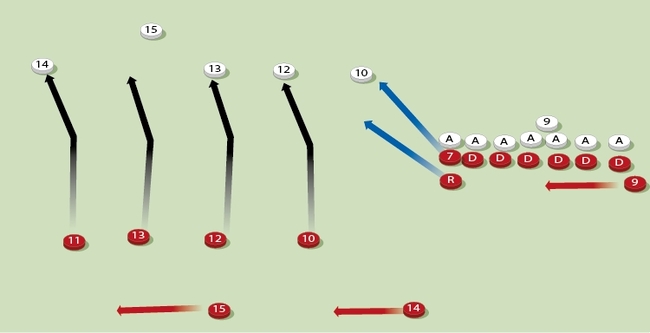Drift defence: Cover all bases
This session develops players’ drift defence techniques. Most defences will be outnumbered at some stage if the team covers kicks into the backfield. Therefore, players will need to drift to cover possible overlaps.
This session develops players’ drift defence techniques. Most defences will be outnumbered at some stage if the team covers kicks into the backfield. Therefore, players will need to drift to cover possible overlaps.
Warm up time: 5-7
Session time: 8-10
Development time: 10-15
Game time: 10-15
Warm down time: 5-8
What to think about
Drift defence is a setpiece system but it is also an essential open play defence. The outside player should call the drift (he can see if there is an overlap!) but the inside players have to push the outside players out. Players have to decide what communication to use (calls) and when they want to move out. Also, your team will need to decide whether they will use a hard or soft drift. A hard drift closes down space in front, while a soft drift comes up slower, giving up ground, but less likely to be beaten on the inside or outside.
set-up
- Come up together and move across together.
- Don’t turn the shoulders, - keep them facing up the pitch.
- Don’t step back to make a tackle, trust the inside player.
What you get your players to do
Set up two sets of four cones about 10m apart, with the cones offset as in picture 1. Start three ruck pad holders on a cone each and three defenders on cones at the other end. Tell the ruck pad holders and defenders to come forward. The ruck pads can move up and across in any direction, aiming to beat the defenders. The defenders aim to tackle from the inside (that is with their right shoulder if they are running up and right). Swap starting points to offer different situations.
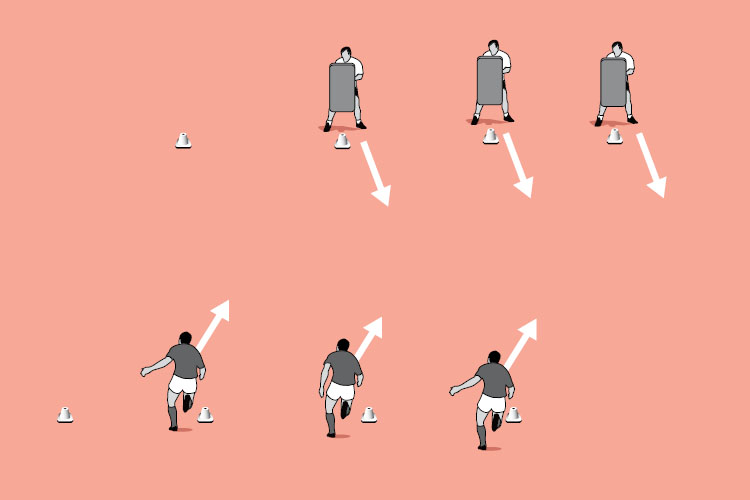
Development
Set up cones to represent a ruck and a cone which the defence cannot pass. Get five attackers and a feeder aiming to beat three defenders. One attacker has to come from behind the front line of attackers. Use touch or full tackling.
Related Files
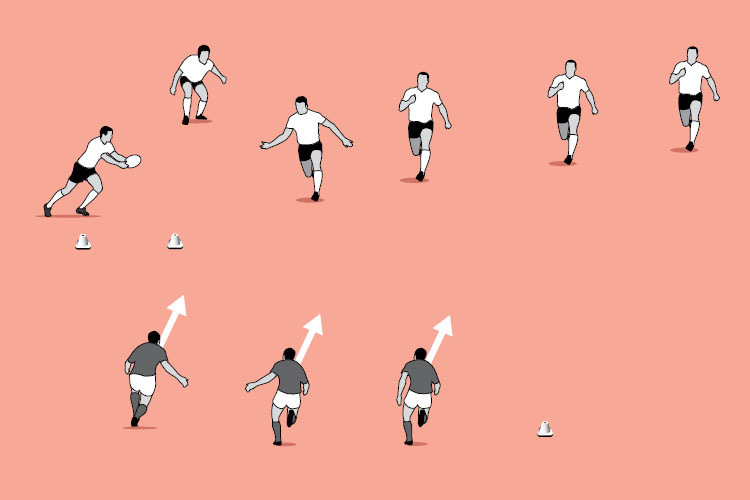
Game situation
Play a game of 7 v 7 touch rugby. When the ball carrier is touched, count down from three (or five to start with). Three defenders must go into a pressup position in front of the ball carrier. After three seconds, the ball carrier can release the ball and all the players can rejoin the game. Turnover on mistakes and after three tackles. Develop by mixing up the length of the countdown. If the defence is not in position in time, then restart the tackle count.

What to call out
- “Talk up the defence to be confident”
- “Think “spacing” – can I cover the gap inside the next defender?”
- “Keep square as you move up”
Newsletter Sign Up
Coaches Testimonials

Gerald Kearney, Downtown Las Vegas Soccer Club

Paul Butler, Florida, USA

Rick Shields, Springboro, USA

Tony Green, Pierrefonds Titans, Quebec, Canada
Subscribe Today
Be a more effective, more successful rugby coach
In a recent survey 89% of subscribers said Rugby Coach Weekly makes them more confident, 91% said Rugby Coach Weekly makes them a more effective coach and 93% said Rugby Coach Weekly makes them more inspired.
Get Weekly Inspiration
All the latest techniques and approaches
Rugby Coach Weekly offers proven and easy to use rugby drills, coaching sessions, practice plans, small-sided games, warm-ups, training tips and advice.
We've been at the cutting edge of rugby coaching since we launched in 2005, creating resources for the grassroots youth coach, following best practice from around the world and insights from the professional game.


